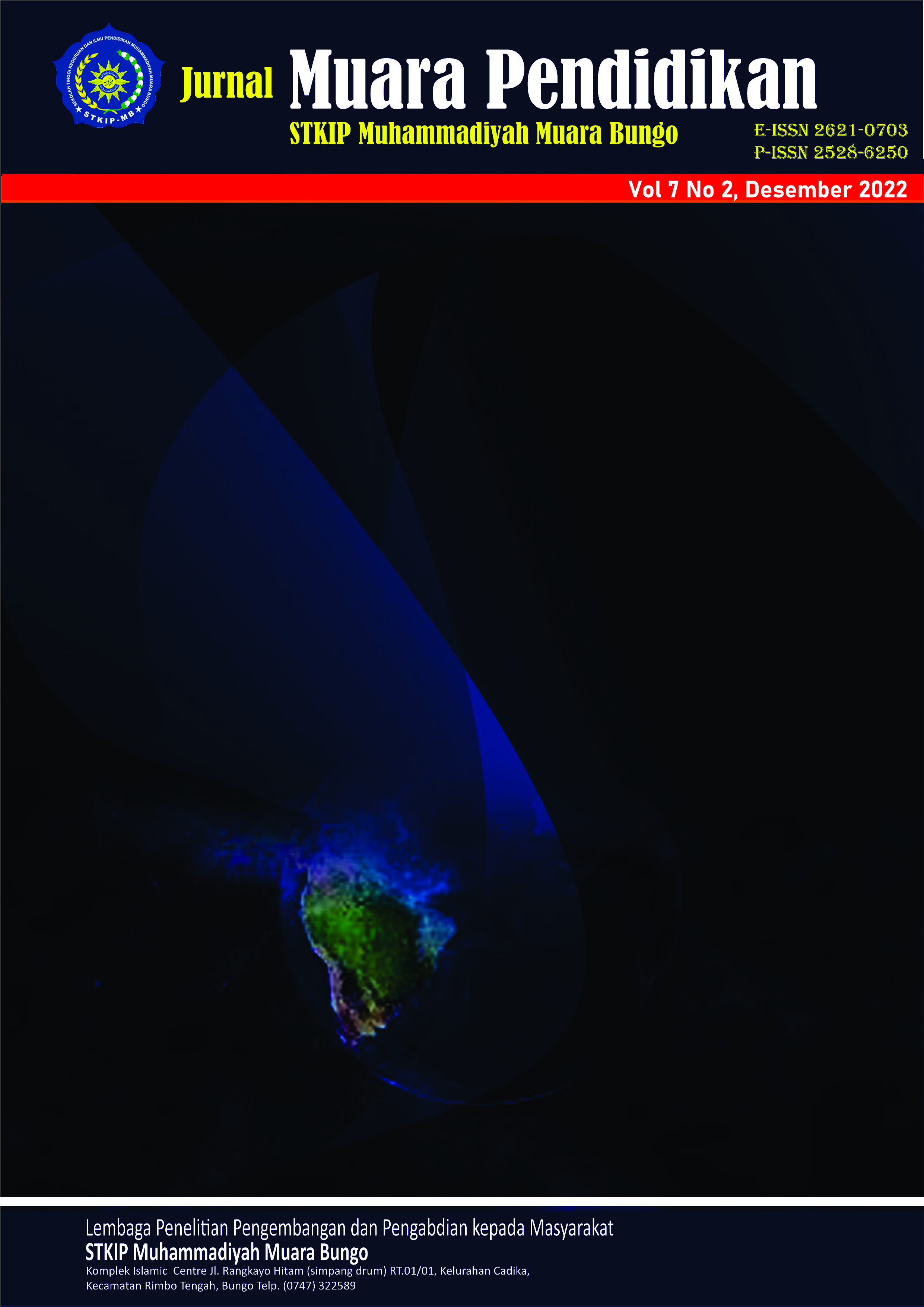HUBUNGAN PENDEKATAN BEHAVIORISTIK TERHADAP KONSENTRASI BELAJAR SISWA SD 2 HADIPOLO KUDUS
Abstrak
Rendahnya pemahaman pada siswa dalam pembelajaran dapat disebabkan karena kurangnya konsentrasi belajar siswa pada proses pembelajaran. hal ini dibuktikan dengan kenyataan ditemuinya pada SD 2 Hadipolo. Tujuan dari penelitian ini adalah untuk mengetahui hubungan antara pendekatan behavioristik dengan konsentrasi belajar siswa dalam proses pembelajaran. Metode dalam penelitian ini kuantitatif korelasi dengan validasi intrumen menggunakan dua indikator variabel yaitu pendekatan behavioristik meliputi kesiapan, latihan, serta pengaruh dan konsentrasi belajar meliputi perilaku kongnitif, periklaku afektif , serta perilaku psikomotorik. Hasil penelitian ini menunjukkan bahwa pendekatan behavioristik memiliki hubungan yang kuat dengan konsentrasi belajar siswa pada kelas III SD 2 Hadipolo kudus. Pernyataan tersebut diperoleh dari hasil uji hipotesis Pearson Correlation pada aplikasi SPSS versi 26 dengan nilai signifikansi 0,000. Simpulan dari penelitian ini yaitu pendekatan behavioristik memiliki hubungan yang kuat dengan konsentrasi belajar siswa pada kelas III SD 2 Hadipolo kudus dengan nilai signifikansi 0,000 < 0,05 yang berarti Berkorelasi di buktikan dengan temuan dalam proses pembelajaran siswa yang awalnya tidak berani mengungkapkan apa yang dirasakan menjadi berani untuk mengungkapkan sesuatu, siswa yang awalnya kurang percaya diri dalam menyampaikan jawaban dari pertanyaan guru, menjadi percaya diri untuk menyampaikan pertanyaan yang diberikan oleh guru. Sejalan dengan yang disampaikan Lawson dalam (Mulyadi, 2016), pendekatan adalah strategi belajaryang digunakan peserta didik untuk meningkatkan keefektifan dalam proses pembelajaran
Unduhan
Referensi
Afif, A., & Kaharuddin, F. (2015). Perilaku Belajar Peserta Didik Ditinjau Dari. Perilaku Belajar Peserta Didik, 2 (2):287-300.
Arikunto, S. (2016). Metodologi Penelitian. Jakarta: Rineka Cipta.
Aviana, & Hidayah. (2015). Pengaruh Tingkat Konsentrasi Belajar Siswa Terhadap Daya Pemahaman Materi Pada Pembelajaran Kimia Di Sma Negeri 2 Batang. Jurnal Pendidikan Sains. 3(1):30-31
Gulo. (2010). Metodologi Penelitian. Jakarta: Grasindo.
Ikbal, B., Sutria, E., & Hidayah, N. (2017). Pengaruh Senam Otak Terhadap Konsentrasi Belajar Mahasiswa. 2(2):52-59.
Mudjiran. (2018). Implikasi Teori Belajar E.Thorndike (Behavioristik). Research And Learning In Elementary Education, 2(2):52-60.
Mulyadi. (2016). Bimbingan Dan Konseling Di Sekolah Dan Madrasah. Padang: Hayfa Press.
Riinawati. (2021). Hubungan Konsentrasi Belajar Siswa Terhadap Prestasi Belajar Peserta Didik Pada Masa Covid-19 Di Sekolah Dasar. Research & Learning In Education, 3(4):2305-2312.
Sugiyono. (2010). Metode Penelitian Kuantitatif. 117.
Sugiyono. (2012). Metode Penelitian Kuantitatif. 184.
Suharsimi, A. (2012). Prosedur Penelitian. Jakarta: Rineka Cipta.
Widianah, S. (2016). Hubungan Kalori Sarapan Dengan Kemampuan Konsentrasi Anak Usia Sekolah Di Sd 3 Canggu. Jurnal Fakultas Kedokteran Universitas Udayana.
Winata. (2021). Konsentrasi Dan Motivasi Belajar Siswa Terhadap Pembelajaran Online Selama Masa Pandemi Covid-19. Jurnal Komunikasi Pendidikan, (1):13
| Keywords | : |
Kata Kunci:
Behavioristik, Konsentrasi, Sekolah Dasar Behavioristic, Concentration, Elementry School
|
| Galleys | : | |
| Diterbitkan | : |
2022-12-01
|
| Cara Mengutip | : |
Saputro, A., Purbasari, I., & Fakhriyah, F. (2022). HUBUNGAN PENDEKATAN BEHAVIORISTIK TERHADAP KONSENTRASI BELAJAR SISWA SD 2 HADIPOLO KUDUS. Jurnal Muara Pendidikan, 7(2), 244–248. https://doi.org/10.52060/mp.v7i2.880
|
| Terbitan | : |



.png)



.png)


.png)
.png)
.png)


_SCCC.png)

